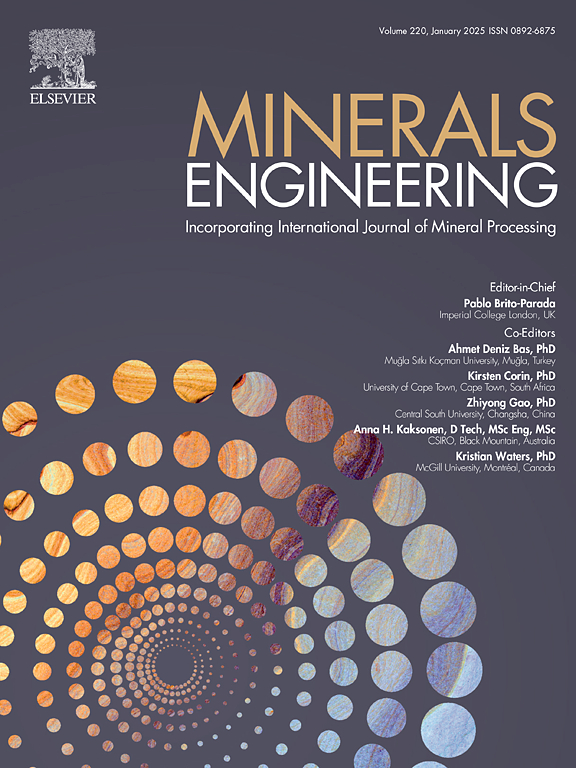Enhanced chalcopyrite bioleaching with mechanical activation and redox potential regulation
IF 4.9
2区 工程技术
Q1 ENGINEERING, CHEMICAL
引用次数: 0
Abstract
The bioleaching of chalcopyrite is limited by its slow leaching rate. To improve dissolution kinetics, the effects of Fe2+ and Fe3+ on mechanical activation-pretreatment chalcopyrite leaching by Acidithiobacillus caldus (A. caldus) and Sulfobacillus thermosulfidooxidans (S. thermosulfidooxidans) were studied. Mechanical activation reduces particle size and causes lattice defects in chalcopyrite, leading to significantly increased chemical leaching. In bioleaching experiments, A. caldus enhanced the leaching efficiency of mechanically activated chalcopyrite in the Fe3+ system, reaching a leaching rate of 95.3%. Increasing the number of sulfur-oxidizing microorganisms and reducing the number of iron-oxidizing microorganisms in the leaching system can keep Redox Potential (ORP) within an appropriate range, thereby improving the bioleaching efficiency. Chalcopyrite chemical leaching and bioleaching with S. thermosulfidooxidans are controlled by surface chemical reactions and internal diffusion, respectively, while chalcopyrite bioleaching with A. caldus contains both mechanisms. The main residues during bioleaching are elemental sulfur and chalcopyrite; therefore, controlling the solution potential and ferrous/sulfur oxidation activity of microorganisms can enhance the bioleaching of chalcopyrite.

求助全文
约1分钟内获得全文
求助全文
来源期刊

Minerals Engineering
工程技术-工程:化工
CiteScore
8.70
自引率
18.80%
发文量
519
审稿时长
81 days
期刊介绍:
The purpose of the journal is to provide for the rapid publication of topical papers featuring the latest developments in the allied fields of mineral processing and extractive metallurgy. Its wide ranging coverage of research and practical (operating) topics includes physical separation methods, such as comminution, flotation concentration and dewatering, chemical methods such as bio-, hydro-, and electro-metallurgy, analytical techniques, process control, simulation and instrumentation, and mineralogical aspects of processing. Environmental issues, particularly those pertaining to sustainable development, will also be strongly covered.
 求助内容:
求助内容: 应助结果提醒方式:
应助结果提醒方式:


